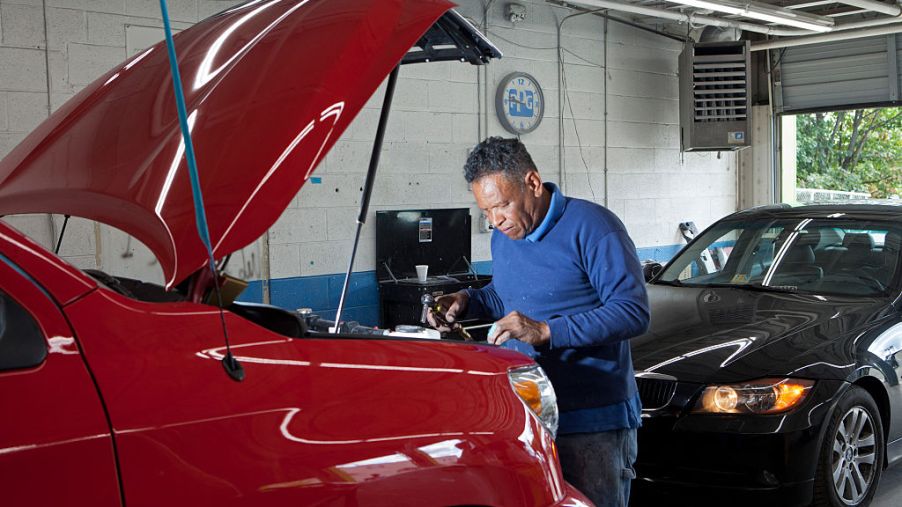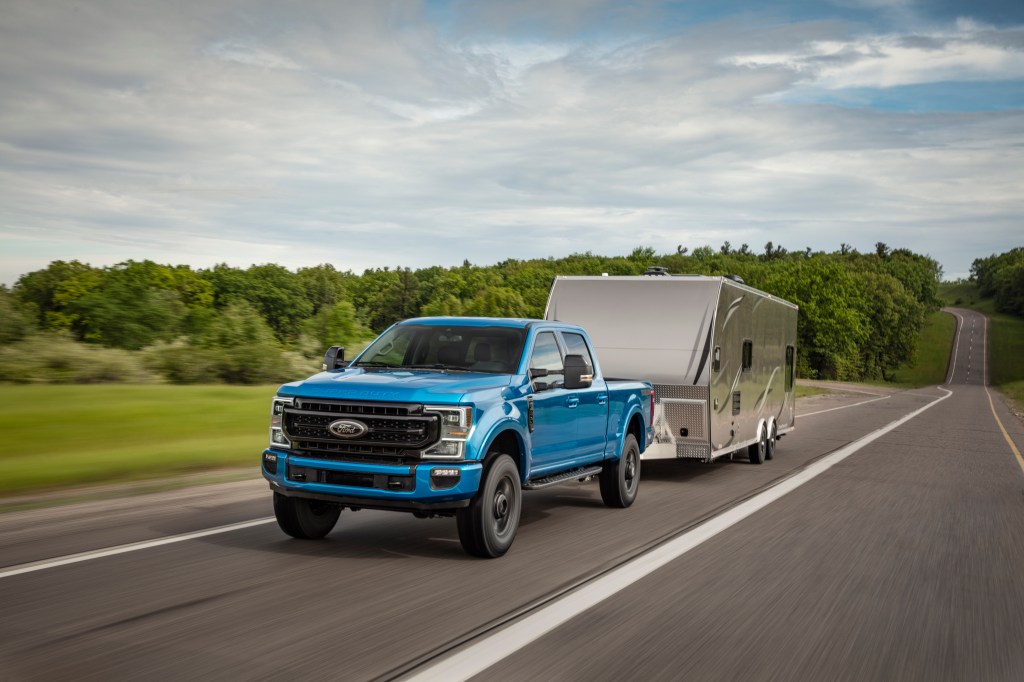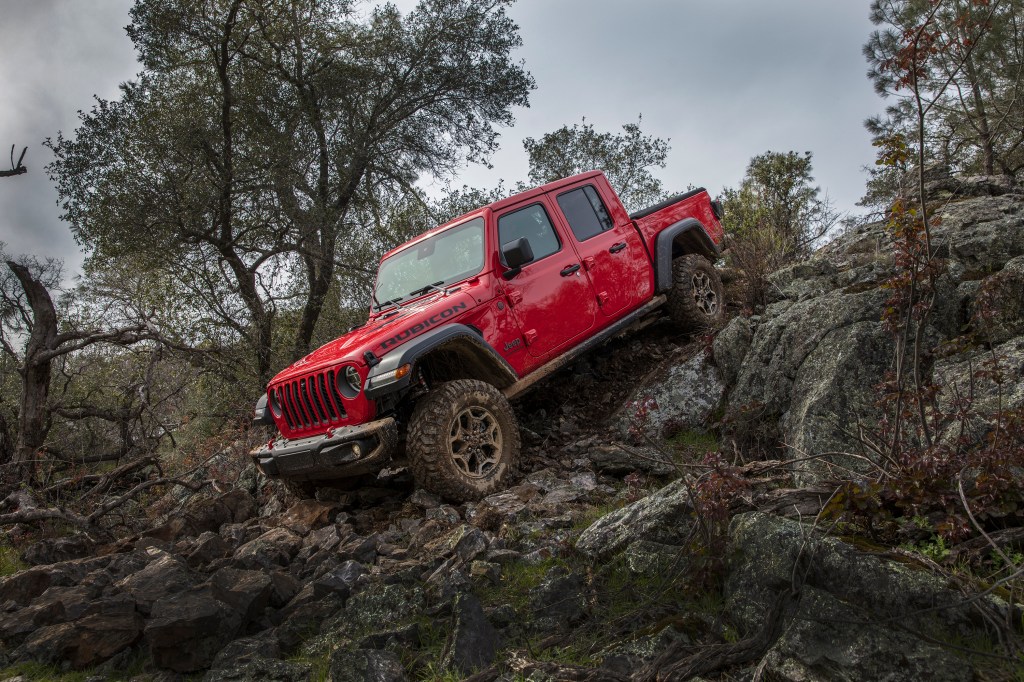
How Pickup Truck Maintenance is Different From Car Maintenance
For many pickup truck owners, doing their own maintenance isn’t just about saving money: it’s something they enjoy doing. Car owners are much the same. And overall, working on a truck is similar to working on a passenger car. There’s oil to change, tires to rotate, brakes to inspect, and so on. Still, an F-150 isn’t a Focus. So, before you set down to wrench, take a look at how pickup truck maintenance is different from car maintenance.
Pickup truck maintenance requires up-sized tools and parts
The most obvious difference between a truck and a car? Size. Wheels, brakes, engines—trucks are physically larger vehicles, with parts scaled up to match. Which means DIY mechanics have to beef up their tools to match.
To lift the truck in the air, for instance, requires floor jacks and jack stands that can take the truck’s weight. Considering you might be under the truck if the stands or jack fail, checking their weight ratings is critical. And keep a healthy safety factor in mind. To work on my Miata, for instance, I use a 2-ton jack. If I was going to help my friend work on his Silverado, I’d invest in a 3- or 4-ton jack.
It’s not just the weight of the truck as a whole to keep in mind, either. Pickups have larger wheels and tires than passenger cars, especially if the truck’s built for off-roading. This becomes especially relevant if you need to change a flat or work on the brakes. Make sure you can safely remove the tire and wheel, or have someone nearby to help.
Finally, because pickups often deal with large workloads, many of their bolts and screws are larger or screwed on tighter than on cars. Double-check if you have the correct size tools to work on them. Information can usually be found in an owner’s or repair manual, or on owner forums. And for something like a stubborn lug nut—especially if it’s from a Ford F-150—longer-handled wrenches can help.
Pickups and cars are used differently

The larger workloads are just one example of how trucks and cars are used differently by owners. Cars, even all-wheel drive ones, are rarely designed to go off-roading. They also can’t tow nearly as much weight as pickups can. But a pickup’s expanded utility and overlanding abilities need to be considered during normal maintenance. Or, depending on how you’re using your truck, “special maintenance.”

Many truck manufacturers provide, depending on your regular driving conditions, a ‘special’ or ‘severe use’ maintenance schedule. This shortens certain service intervals and includes additional inspection areas. As Road & Track explains, if you drive your truck in a hot and dusty environment, or carry huge loads, or even take multiple short trips in a day, you may need to switch to a special maintenance schedule.
How wear can tear your truck down
Carrying or towing large amounts of weight also plays into your truck’s suspension and frame components. Suspension does wear out in both cars and trucks, but in most cases, only the shock absorber is regularly replaced. However, since trucks can tow large quantities, PickupTrucks.com explains, that places additional stress on the springs and frame. Pickup trucks also have steering, suspension, and driveshaft joints that need to be regularly greased. If not, they can loosen or even break, and cause the truck to go out of control.

Your pickup truck’s wheels and tires can also affect steering and handling, even more so than a car’s. Going over large holes and obstacles—whether a city pothole or a Moab Trail rock—especially at high speeds causes the wheels to go off-balance and out of alignment. Not only does this affect handling and ride quality, this can also cause uneven tire wear, which makes these problems worse.
Checking wheel balance and alignment is best suited for a repair shop. However, rotating your tires is doable for any home mechanic. Road & Track recommends rotating your tires at the same time as your oil change—your truck’s already in the air, anyway. Rotating your tires helps extend their lives. It can also improve your ride quality and prevent uneven suspension burden. And especially-uneven wear can help diagnose or pinpoint a more severe suspension problem.
Pickup and car fluid needs are slightly different
There isn’t any difference in what kinds of fluids trucks and cars need. They both need washer fluid, coolant, transmission fluid, and motor oil. For diesels, exhaust-treatment fluid is added to the mix. As with tires and suspension, truck workloads sometimes mean regular fluid-replacement intervals get shortened, according to CarGurus. But there are further differences between trucks and cars when it comes to certain fluids.
Trucks usually have bigger engines than cars. These bigger engines need larger quantities of coolant and oil. But the kinds of conditions trucks see require slightly different ‘recipes’ for their oil. For one, truck oil is more viscous than passenger car oil, according to Oil Specifications. Also, and especially for diesel trucks, truck oil contains more additives and detergents to keep the engine clean. Both conventional and synthetic oil can be used, but NAPA suggests that synthetic oil additives may last longer. And, especially for trucks with high miles towing large loads, Popular Mechanics suggests high-mileage oils, to help keep engine seals and valves in good condition.
Pickup trucks have their own unique maintenance requirements. But with the proper prep-work, home mechanics should have no problems wrenching away.


